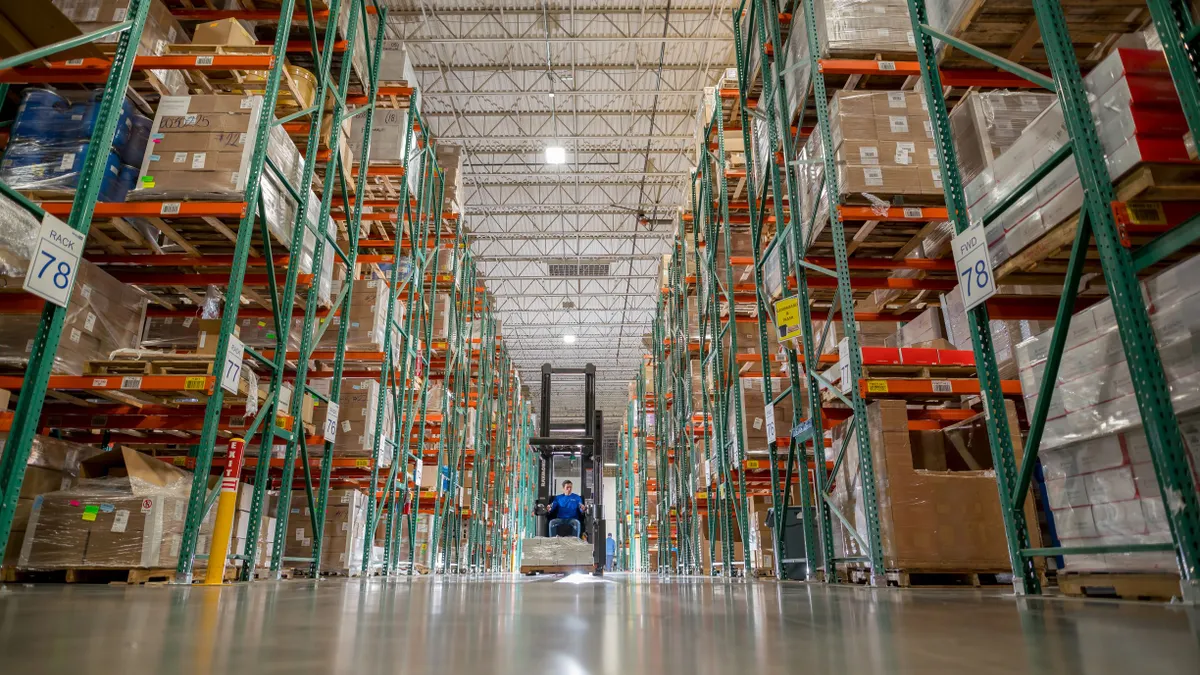Dive Brief:
- Nearly two-thirds of midsize businesses have used strategic stockpiling to alleviate recent supply chain disruptions, according to JPMorgan Chase's 2022 Business Leaders Outlook Survey released last week.
- Other popular workarounds for the 1,602 respondents included adding suppliers from new geographies (51%) and allocating more funds to account for higher costs to move products (48%). The survey, conducted in November, defined midsize businesses as having annual revenues ranging from $20 million to $500 million.
- "To stay competitive in the global economy, more midsize companies appear to be moving away from a small-business mindset and thinking big—like their large, multinational counterparts," according to the survey findings. "They've indicated that they're diversifying their supply chains and taking a more strategic approach to sourcing and stocking goods."
Midsize companies prioritize strategic stockpiling, sourcing shifts
Dive Insight:
Outside of finding workers, midsize businesses pointed to the clogged supply chain as their biggest issue, according to the survey. Both are major hurdles these companies will need to clear to keep costs down in 2022.
"Businesses today are eager to grow, but are having to navigate the reality of not being able to fill open roles quickly enough and dealing with disruptions in their supply chain that are slowing them down," John Simmons, head of middle market banking and specialized industries at JPMorgan Chase Commercial Banking, said in a statement. "At the same time, it's encouraging to see companies' adaptability and the pivots they've made to push through major pain points."
Many midsize firms are executing supply chain plays similar to their larger counterparts: bolstering inventory, diversifying suppliers and finding substitute materials and processes. Some reexamined their approach to safety stock after pandemic-induced shortages brought criticism on just-in-time supply chains.
On the labor side, the majority of midsize businesses (81%) raised wages to attract and retain workers in a difficult hiring environment, according to the survey.
Companies adjusting to these tumultuous conditions helped keep shelves stocked in the face of high demand during the holidays. But efforts seen at both medium- and large-sized businesses to stock up on inventory could backfire in the months ahead, according to the most recent Logistics Managers' Index report. Inventory levels remained elevated in December, a time when they usually drop.
"This could foreshadow a coming bullwhip effect in which supply chains over-ordered to avoid shortages and are now dealing with the burden of having too much inventory – or too much of the wrong type of inventory – on hand," LMI's December report reads.
Still, 83% of midsize business leaders feel optimistic about their performance in 2022 as revenue and sales are expected to jump, according to JPMorgan Chase. That's six percentage points higher than the year before.
This story was first published in our Operations Weekly newsletter. Sign up here.















